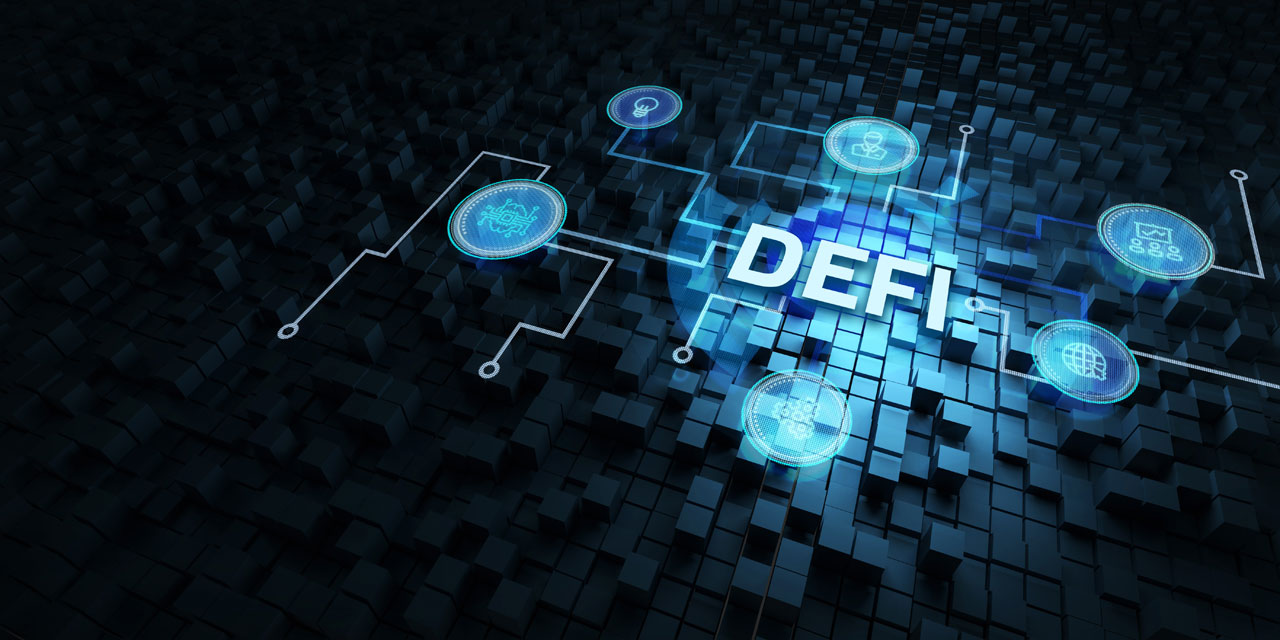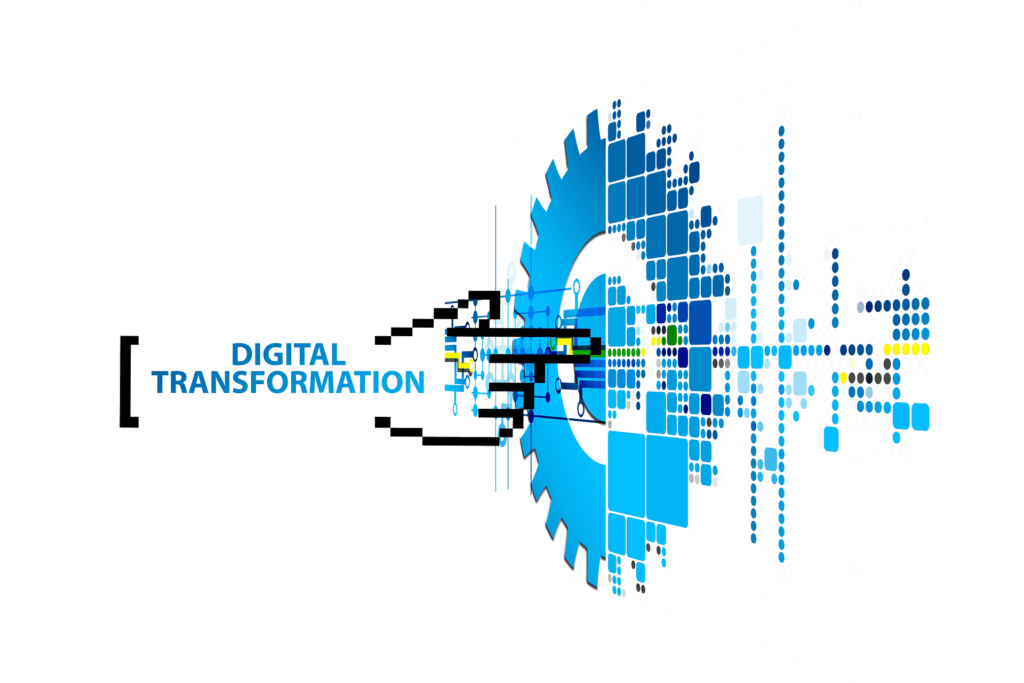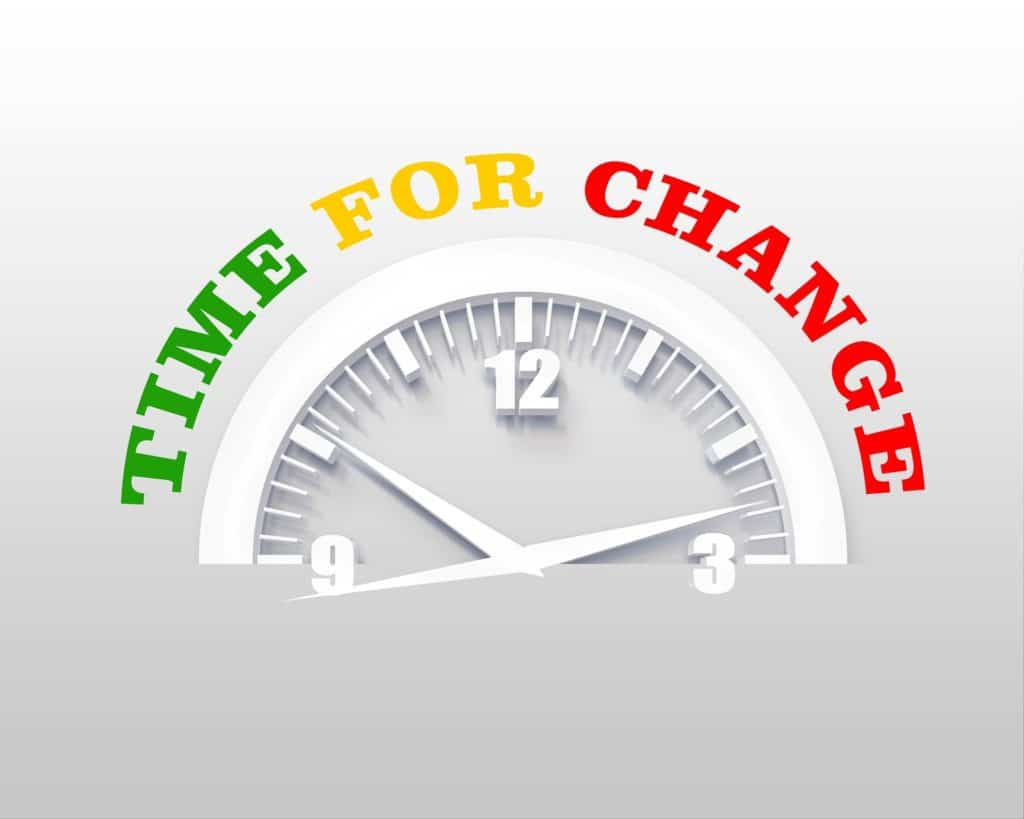In life and business, timing is everything. That’s why leading fintechs are focused on crucial questions about what decentralized finance, or DeFi, will mean for their business model and future product strategy.

The signs that DeFi is already transforming traditional financial services are everywhere. It goes beyond the growing realization that cryptocurrency, now a $2.8 trillion market, is here to stay. It’s also time to acknowledge that innovations like non-fungible tokens (NFTs) are not mere fads, but elements of an emerging financial reality. Curiosity and enthusiasm for these and other new Web 3.0 opportunities is growing – so fintechs must respond.
If you’ve hesitated to dive into these questions, now’s the time – because, for many fintechs, DeFi will issue a clear demand: evolve or dissolve.
Understanding DeFi and Web 3.0 in Context
Let’s start from a clear perspective of what DeFi really means and the role Web 3.0 plays in fueling the transformation of financial services.
DeFi, in essence, is a powerful trend that encompasses crypto, NFTs, and other innovations that have captured the media and the public’s attention. But, even more crucially for many fintechs, DeFi will reshape the way financial transactions happen. Consistent demand for lower fees and higher investment yields drives this aspect of decentralization, and the implications for many fintechs will be substantial.
Web 3.0 is often used interchangeably with DeFi, and while they’re mutually independent, it’s helpful to think of Web 3.0 as the landscape where DeFi will unfold and also the engine driving it. While decentralized finance is still under development, things are moving at a surprisingly fast pace.
At the heart of Web 3.0, blockchain technology opens the door for direct, user-driven transactions that no longer flow through traditional institutions and their financial intermediaries. In one example, an investor will be able to set up a smart contract authorized to move money among various investment vehicles when predefined rules are met. These contracts will ultimately make the multiple third parties that handle transactions today a thing of the past.
Visualizing DeFi’s Power to Disrupt What You’re Doing Right Now
With a clearer understanding of DeFi, Web 3.0, and related developments, a few tough realities come to light.
If you currently operate as a third party to financial transactions, your business model and product roadmap MUST change.
If you are a fintech serving third-party transaction managers, the need to rapidly rethink your business model may be even greater, because clients are counting on your leadership to help them adapt to Web 3.0 quickly, smoothly, and profitably.
Now it’s easy to see why crypto is just the beginning. As DeFi becomes our defining reality, virtually all fintechs must develop a clear view of what’s on the horizon.
Assessing DeFi’s Impact on your Business Model and Product Innovation Cycle
The decentralization of finance via Web 3.0 is in its early stages, but fintechs should open the conversation about potential risks and gains right now. Here are questions to spark open dialogue among the thinkers who drive your strategic planning, business development, and product roadmap.
How will our business model need to shift?
This may be the most crucial question for forward-thinking CEOs and CPOs leading fintech companies. Like any major disruptive force, DeFi presents both huge opportunities and threats to existing business models. Exactly what this means for your company will depend on your market, your vertical, and your focus. As you unpack the questions, I recommend this Forbes article as a foundation for understanding how companies can adapt.
DeFi transforms the model of trust in a profound way. Web 3.0 will present users with a new array of possibilities and every incentive to try them out. Why would investors pay 3% to a giant broker-dealer, for example, when they can manage their own transactions for .5%?
Other Web 3.0 users will want to remit payments via crypto and seek out companies ready to accept it. Still others may avidly explore NFTs and other opportunities open to them. Envisioning a new marketplace where new trends arrive and garner attention rapidly is key.
Will we need to rethink our product roadmap?
DeFi may demand that you reshape your business model, your product roadmap, or both. Working with a partner who brings large-scale digital transformation expertise can help you define what needs to happen and how rapidly you need to move. Read more about our work with fintech companies.
As one example, let’s consider how your company might design a pilot to accept cryptocurrency as payment. The high-level steps might include:
- Creation of digital wallets to accept crypto
- Framing of payment systems to accept and route crypto transactions
- Weighing risks and tradeoffs, including volatile rates based on timing of transaction settlement
- Selecting which cryptocurrencies you’ll accept (there are hundreds to consider)
- Rolling out a pilot to beta customers
- Continuous evaluation to capture challenges and lessons learned
- Refinement and full scale-out
As a second example, let’s say you want to pilot smart contracts. You might start by:
- Defining exactly what will change in the way you serve customers
- Tapping your product innovation team’s best thinking to shape the beta contract
- Offering the contract to a few customers initially
- Evaluating continuously to capture challenges and lessons learned
- Refinement, then small rollout, followed by full scale-out
Are our customers ready for crypto and other DeFi-driven innovations?
To help answer this question, take time to assess the market landscape. Are customers aware of cryptocurrency, but not expressing demand for it yet? Or are you seeing signs of pent-up demand by those who are intrigued and possibly ready to adopt?
Talk with your customers to understand where they are on the spectrum of interest and adoption. The dimensions of this conversation will depend on the products and services you offer and the nature of your customer relationships. What’s crucial is opening the conversation now to underscore your readiness to lead and innovate.
As you open the subject with customers, have rich learning resources ready for them. Be prepared to offer clear perspectives and respond to concerns, such as the immense energy cost of cryptocurrency which, as critics point out, is far from environmentally friendly.
What DeFi-related risks will we need to evaluate?
This depends on the unique business you’re in and the strategic changes you make to your business model and product offerings. But let’s use cryptocurrency as a source of two good examples:
Fluctuation of crypto’s value. You could end up short when you translate cryptocurrency into dollars. The risk is analogous to those you face in exchanging foreign currency or trading stocks. Bitcoins were trading at $42,600 recently, down from over $65,000 a few months ago and up from $1,000 just five years ago. Since settling crypto transactions takes time, you can lose value when rates shift during the delay.
The variable cost of certifying decentralized crypto transactions. Costs might be .5% on Monday and 8% on Tuesday, since rates fluctuate with demand. Certification represents a tough mathematical problem on blockchain, so crypto mining consumes a lot of energy and serious computer processing power. When network congestion is low, transactions cost less; when demand rises, so do costs. You can elect to process a transaction later, when the network is less congested – but higher-value transactions may favor a process closer to real-time, which comes at a premium cost.
How Will Our Internal Operations Need to Evolve?
As you explore the big questions that point to threats and opportunities, a prime consideration will be the potential impact that changes in your business model or product innovation flow will have on people, processes, and technology. Specific questions include:
What skill sets will our people need?
One obvious requirement is blockchain experience, crucial for software engineers and others on your team.
What new processes will we need?
For example, if we want to accept cryptocurrency payments, who will convert crypto to cash, how quickly will conversions need to happen, and what are the actual steps in the process?
What tech infrastructure will work for us?
With crypto, will you do your own mining? What’s the best way to implement new technology required to drive things forward? Will you need to outsource talent while your own team builds blockchain expertise?
Prepare for DeFi and Web 3.0 Now with the Right Guidance
The insights and examples offered give you a sense of the scope of disruptive change heading our way. Determining how to move forward is by no means an easy task. The Ten Mile Square team of digital transformation experts is ready to explore the potential upsides and risks with you, helping you create a clear, accurate picture of how your fintech can prepare to prosper in a DeFi world. Get in touch with us now to start the conversation on how DeFi will impact your business model and product roadmap.
Decentralized Finance and Web 3.0: Key Terms
What is decentralized finance or DeFi?
DeFi is the shorthand term for decentralized finance, an emerging wave of change within financial services, powered by new blockchain technology and driven by the market’s desire for decentralization driving lower fees and greater control over data and transactions.
What is Web 3.0?
Web 3.0 is the collective term for the next iteration of the World Wide Web that is based on a blockchain digital landscape where decentralized exchanges will become the new reality. As this next ecosystem of the internet evolves and runs these smart blockchain programs to assist users, it will process information with human-like artificial intelligence (AI) systems and become more intelligent.
What is blockchain?
A distributed database shared across multiple networks. Best known for their role in cryptocurrency systems, blockchains maintain a secure and decentralized record of transactions. You can think of blockchain as a digital accounting system – paper and trail – that doesn’t ever change, but also doesn’t live in one place. Past ownership is always known.
What is cryptocurrency?
Digital assets that use cryptography to secure transactions and control the creation of new units. Bitcoin was the first cryptocurrency in 2009, and there are now more than 2,000 unique cryptocurrencies in circulation. Cryptocurrencies are often traded on exchanges, where they’re bought and sold for traditional currency.
What are non-fungible tokens or NFTs?
NFTs are assets on a blockchain, such as Ethereum, with unique identification codes and metadata that distinguish them from each other. NFTs can be used to represent real-world ideas such as artwork and real estate, giving creators the opportunity to be better compensated for their works. Unlike crypto, NFTs cannot be traded or exchanged at equivalency.
What are smart contracts?
Smart contracts are programs used in decentralized finance exchanges. Smart contracts live on a blockchain that runs the program when the parties involved meet the conditions for the exchange. These contracts obviate the need for multiple third-party financial intermediaries to manage transactions. Users can deposit money into smart contracts, then a decentralized application (DApp) automatically distributes funds according to predefined rules. Peer-to-peer lending and user-managed investing are two examples of the role smart contracts will play in a DeFi-driven world.
Contact us today for more guidance or an unbiased perspective on the impact of DeFi on your fintech.

